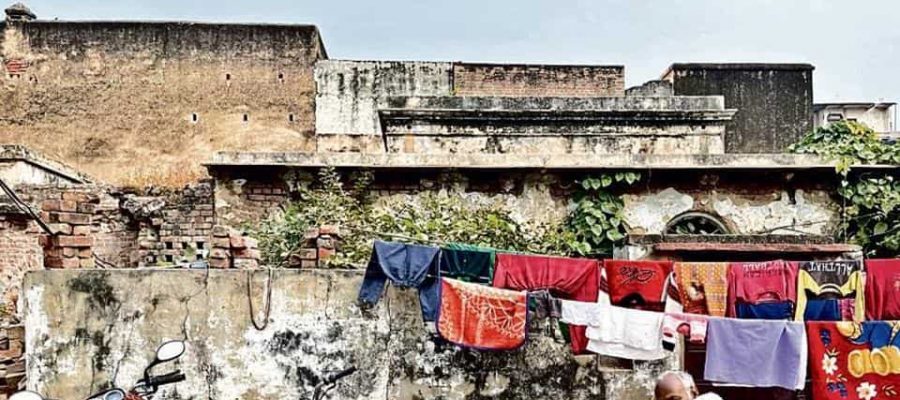The sight is incredible. Two eras next to each other. One is more than 100 years old, and the other is just four months old. And the one uniting these two periods is a man in his 60s.
“This is my granddaughter, and that used to be my neighbour’s house,” says a beaming Manoj Jain. The little girl is too young to have a name, he says, but “let’s call her Angel.” The house behind him is a bungalow in ruins. In fact, it is one of the very few edifices of such a vintage that still survive in Gurugram, a place in the National Capital Region otherwise so modern that it is known as the Millennium City. This particular locality, Roshanpura, actually has a handful of old houses, many of them in a similar shabby state. Mr Jain, who describes himself as a “retired man”, lives with his family in a house directly opposite this picturesque ruin.
“My house is also old,” he declares. Waving his hand dismissively, he cheerily launches a diatribe on the newer buildings. “They are nothing compared to the old ones. Houses like ours have walls that are 18 inches thick. Imagine that in the houses of today, with their 4 inch walls!”
Meanwhile, it’s warm and sunny, and Angel is lying on Mr Jain’s lap, her eyes closed, oblivious to the architecture of the past and present. Her family’s colourful laundry is drying on a wash line strung across the length of the derelict bungalow.
The paint of this long-uninhibited house has peeled off the brick walls. The windows are without glass panes. The doors are open, but they are choked with overgrown wild grass. Money plant vines have spread upon the entire front facade, entangling the bungalow into a kind of fishing net. It’s difficult to see anything inside the open rooms because of the vegetation. The whole setting looks like a scene in a fairy tale.
“The family that owns it now lives in another city,” says Mr Jain. He remembers playing in this house as a boy. “The kids living here were my friends.” He would go to the house—when it was still a home—almost everyday. There were taaks—arched niches—on every wall. Indeed, one can spot a few of those taaks even from the outside, if you strain your eyes and look through the vine-cover.
“And it had marble floor,” adds Mr Jain. He gestures towards a multi-storey building on his right. It is very new. The walls haven’t been painted yet. “An old bungalow stood there too… all such houses are being replaced one by one,” he observes, betraying no hint of lament in his voice. “But my house shall remain.”
One wonders what this place will be like when Angel will be big enough to understand the changes brought about by time. A mall perhaps? In any case, you ought to see this edifice before it disappears into history.
Source: Read Full Article

